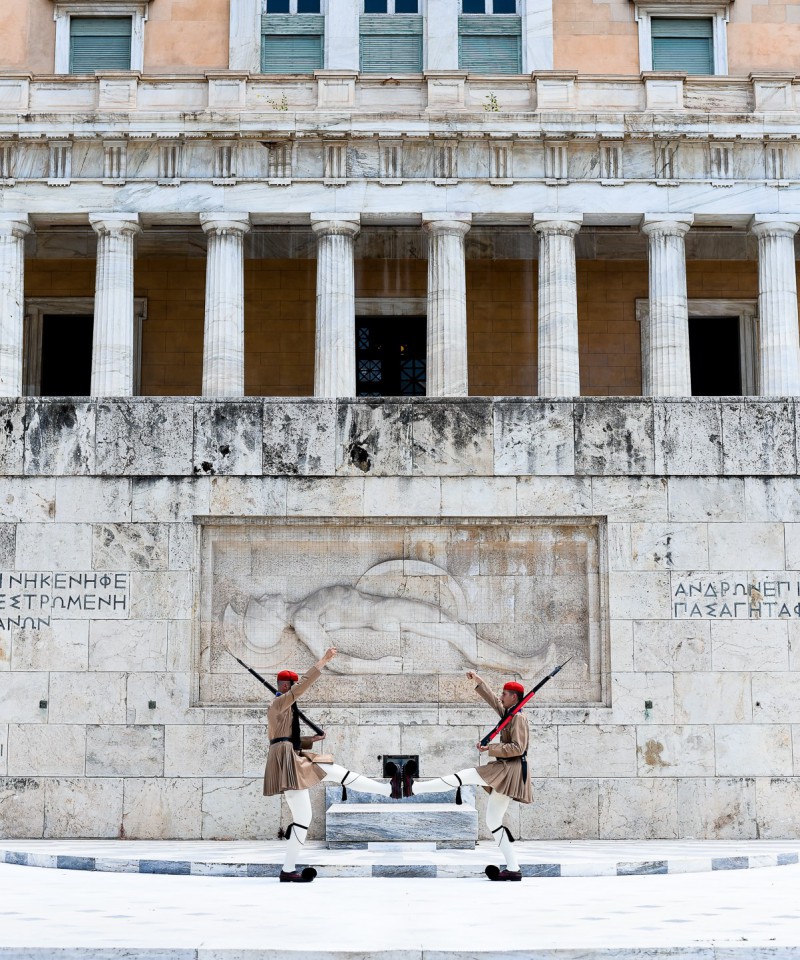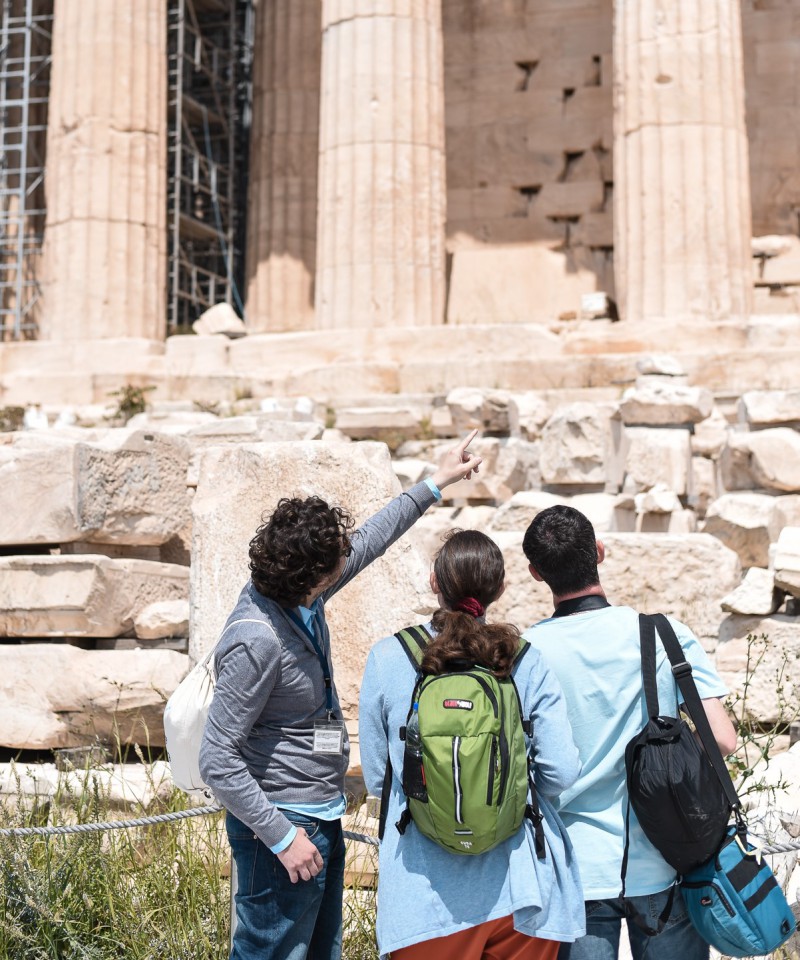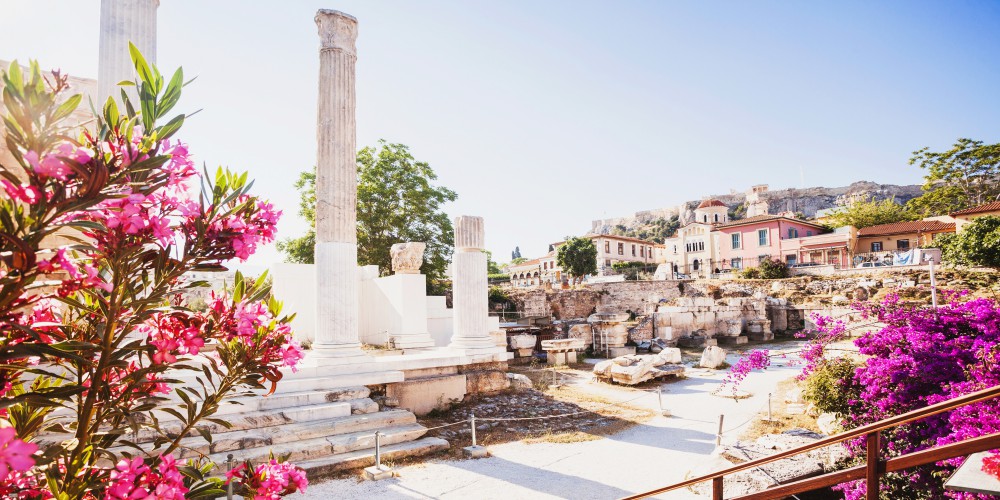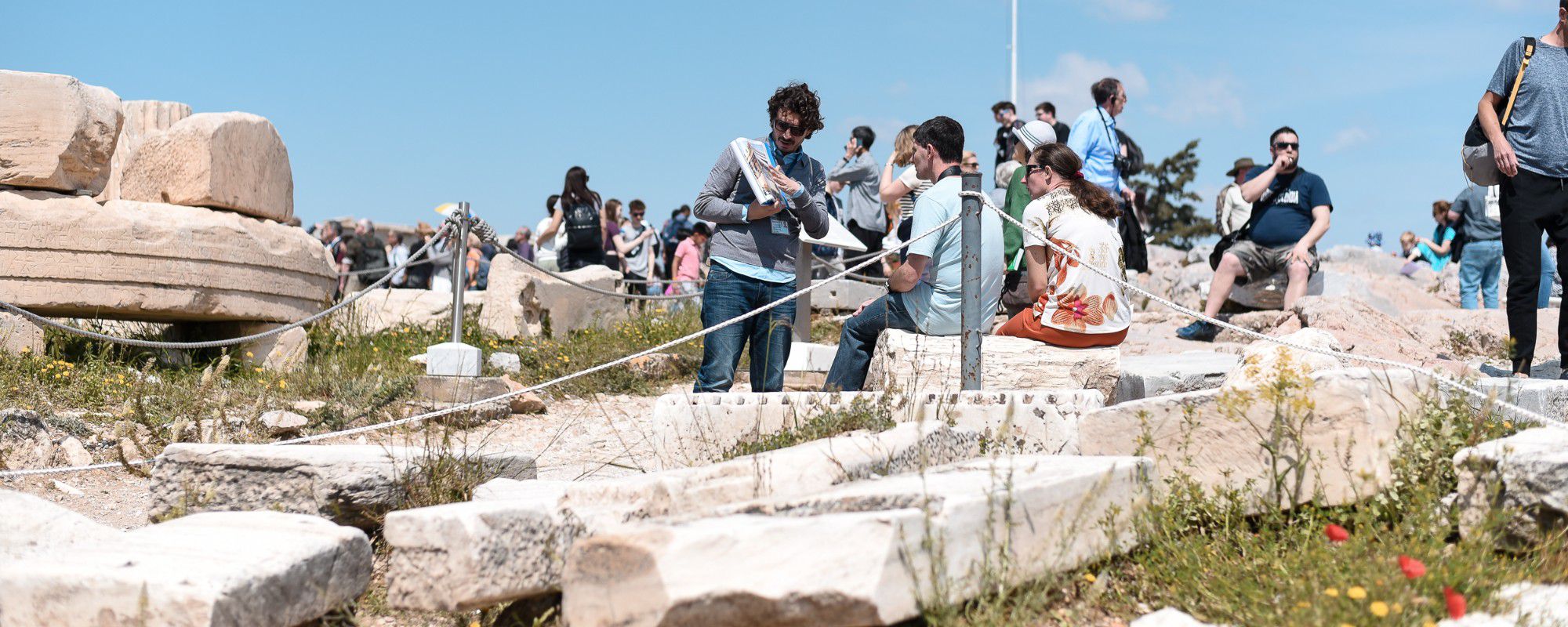
Acropolis of Athens: The Ultimate Guide & 2026 Visitors' Tips
Key Takeaways
- Contrary to popular belief 'Ácropolis' is not the name of the temple on top of the hill, the Acropolis refers to the whole hill, with the famous temple on top being the 'Parthenon.'
- The general admission for the Acropolis Hill is 20€ unless you visit it on its free days, listed below.
- You need two full hours to explore the entirety of the archaeological site.
- A guided tour of the Acropolis and the modern Acropolis Museum is the best way to explore the full potential of the archaeological site.
As soon as you book your flights to Athens, you dream of visiting the most fascinating archaeological sites in Greece and probably the whole world.
The Acropolis never fails to steal the heart and leave in awe each of its visitors with its beauty, grandeur, and rich history. A feat just a few ancient cities managed to accomplish.
While climbing up the imposing rock, you will get to discover the legendary tales behind each corner and watch the ancient Greek world from the archaic period to today come to life.
Here, we present to you the ultimate guide to the Acropolis and some visitor tips that will help you enjoy your Acropolis experience to the fullest. It is the single most sought-after of the landmarks in Greece, and it is included in all of our Greece vacation packages for a good reason!
Definition and Meaning of the 'Acropolis'
The word 'Acropolis' is the name of every city or town built at the top of a hill or high ground level. The word derives from the Greek 'acropolis' and is a composition of two other words, 'acro,' which means 'edge,' and 'polis,' which means 'city.'
However, when we talk about the Acropolis, we always refer to the Acropolis of Athens, the famous navel where the Ancient Greek spirit was nurtured to illuminate the track of Western civilization later.
General History of the Acropolis
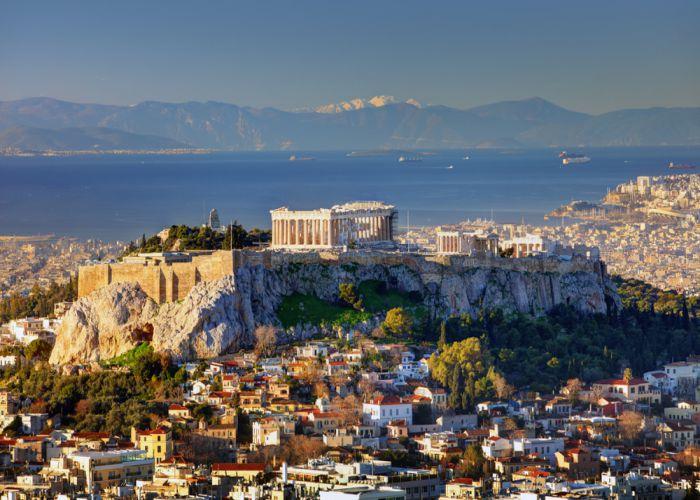
The Acropolis of Athens is a rocky hill in Attica that is about 6 km away from the beach of Faliro. It has a height of 60-70 meters from the hill's perimeter and is located at an altitude of 156 meters from the sea.
A few fragments of pottery and some remains of houses testify that it had been continuously inhabited since 5000 BC. However, the coordinated construction of the buildings that we see today was launched by Pericles in the fifth century BC, during the so-called Golden Age of Athens.
The inhabitants of the city, which began to develop under the Acropolis, found refuge inside it when faced with enemy raids. Its character became religious when the inhabitants of the surrounding settlements decided that the common center of worship should be placed in it. In the time of Constantine, the Acropolis of Athens began to decline as the old religion lost its glory.
Its religious character, however, remains unchanged, with the Parthenon being transformed into a temple of the Virgin Mary, the Propylaea into a temple of the Brigadiers, and the Erechtheion into a temple of the Virgin.
During the Frankish rule, the area became the residence of the rulers, the Propylaea were formed into palaces, while in a part of them, a high square tower was built. In general, however, its appearance did not change dramatically. When the Turks occupied Athens, the Parthenon became a mosque.
During the Ottoman period, the Turks built houses on the Acropolis and used various buildings for ammunition depots. In 1655, lightning struck the Propylaea, while shortly after, the Turks demolished the temple of Apteros Nike to build a machine gun.
The greatest destruction, however, took place in 1687, when the Venetian Morosini besieged the Acropolis. A shell fell on the Parthenon of Athens, tearing down most of the temple. As the history of the Athenian Acropolis shows, it has been used for various purposes through the centuries, depending on the ruler of the time. It suffered serious damages during the 17th century A.D. Lord Elgin removed many Parthenon sculptures in the early 19th century.
Eventually, the Acropolis went under restoration during the emancipation of the Greek state in the 19th century, with the restoration process continuing to this day.
The Acropolis Monuments; an understanding of Greek Culture
The one who associated his name with the classical form of the rock was Pericles, who, with the help of worthy architects, such as Iktinos and Kallikrates and the unsurpassed sculptor Pheidias, created the most important monument of ancient times, an artistic ensemble that people admire from all over the world to this day.
Parthenon’s construction ended in 438 BC, then the Propylaea, the impressive marble construction surrounding the natural entrance to the plateau, was inaugurated in 432, while the temple of Apteros Nike was completed in 425. The last building built in the vortex of the Peloponnesian War was the Erechtheion.
Apart from these, the rock of the Athenian Acropolis includes other monuments, such as the ‘Vravronio,’ dedicated to the goddess Artemis (and not Athena!), as well as the Conservatory, the Asclepieion, and the theater of Dionysus, which were built on its slopes.
Subsequently, various Mycenaean kings of the Hellenistic period -which also had the Mycenaean Acropolis- and Roman emperors sent various tributes to the Holy Rock, but they cannot be compared with the statues of the classical period. A circular temple was built in honor of the emperor Augustus and Rome, while a marble staircase and the gate that is still used today for entrance were built later, around 180 AD.
The Parthenon; the 'sacred precinct' of Ancient Greece
The Parthenon was built on Athena's former temple (Athens's patron goddess), which was destroyed by the Persians during the Persian Wars. It was built in honor of the goddess Athena 'polias,' and it was the result of the collaboration of important architects and sculptors in the middle of the 5th century BC.
The era of its construction coincides with the ambitious expansion plans of Athens and the political prestige that followed against its allies during the period of Athenian hegemony in Ancient Greece.
The Parthenon, dedicated to 'Athena Parthenos,' the patron goddess of the city of Athens, is the most brilliant monument of the Athenian state and the colophon of the Doric style. Its construction began in 448/7 BC., and its inauguration took place in 438 BC. in the celebration of ‘Megala Panathinaia,’ while the sculptural decoration was completed in 433/2 BC.
According to the sources, the architects who worked were Iktinos, Kallikratis, and possibly the famous sculptor Pheidias, who was also responsible for the sculptural decoration. It is one of the few all-marble Greek temples and the only Doric one with all its metopes in relief.
Many parts of the sculptural decoration, the entablature, and the ceiling panels were painted in red, blue, and gold. Pentelic marble was used, except for the pillar, which was made of limestone. The wing had 8 columns in width and 17 in length. The second row of 6 columns on the narrow sides created the illusion of a double temple.
Another peculiarity was the existence of a frieze that surrounded the nave along its entire length and is, perhaps, the most obvious of the Ionic influences. The metopes on the east side depicted the Battle of the Giants, the west depicted the Amazon Battle, the south the Battle of the Centaurs, and on the north side, scenes from the Trojan War.
The imposing temple manages to survive relatively unscratched through the years of foreign rule. However, In 1687 the Venetian army besieged the Turks who were on the Acropolis of Athens. A shell fell on the Parthenon, which was used as a gunpowder depot, causing an explosion that blew up the building, large parts of which were destroyed or hurled.
The Venetians eventually took possession of the Athenian Acropolis and, in their attempt to steal some Parthenon sculptures caused further damage. The following year the Venetians left Athens, and the Turks returned. In 1801 AD Thomas Bruce, Earl of Elgin, the British ambassador to the High Gate, managed to extract from the Sultan a firman authorizing him to remove from the countries under the sultan's jurisdiction whatever antiquity he wanted.
Elgin took various sculptures. In his attempt to grab as much as he could, he also caused great damage. In total, he transported 18 statues from the gables, 15 metopes, and 50 stones from the 75-meter-long Parthenon frieze to London. In 1815, the British Museum bought the sculptures of the Parthenon from Elgin, where they remain to this day.
The Old Temple of Athena Nike in ancient Athens
To the right of the Propylaea, high, on the roof of the old Mycenaean palace, at the southwestern end of the Athenian Acropolis, you can find the small and graceful temple of Athena Nike. During the Mycenaean times, it was fortified with a tower, a continuation of the Mycenaean wall, to protect the site's main gate and must have been located in the current location of the southern wing of the Propylaea.
At the same time, there was a small sanctuary, with a double niche, on the west side of the Cyclopean tower. In 409 BC, a marble shield about 1 m high was built on the tower's edge to protect the pilgrims.
This shield consists of relief plates depicting winged Nike who sacrifice or lead bulls to the sacrifice or decorate trophies, and the goddess Athena sitting to watch these scenes. Several of the shield plates and parts of the frieze can be admired by the visitor at the Acropolis Museum of Athens, while other parts of the frieze are in the British Museum.
The temple was demolished in 1686 AD. by the Turks, who used the marble of the temple to strengthen the fortification wall that was built between the Tower of Victory and the Gallery of the Propylaea. In 1835, after the founding of the Greek state, many restoration efforts were made, with the last one being carried out between 2000 and 2010.
Directions and Important information about visiting the Acropolis of Athens
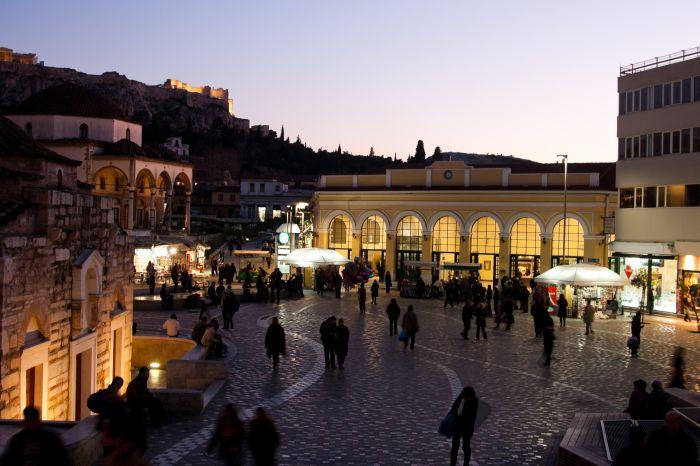
You can easily access the archaeological site of the Acropolis, as it is located in the city center. You can either walk a few minutes from Monastiraki Square, take the metro red line, and disembark at the 'Acropolis' station. See? the Greek government has your back!
Please bear in mind that the opening hours are 8.00 am to 8.00 pm daily during the summer months and the ticket costs 20 euros (including the north and south slope of the hill).
If you plan on visiting the archaeological site, we suggest you take the time to check up-to-date information about opening hours and ticket prices at the official website of the Ministry of Culture and Sports.
Tip! A tour around the Acropolis Museum will help you put all the pieces together, quite literally, as many original artifacts from the Athenian Acropolis buildings are part of the exhibition.
Walking around the Athenian Acropolis
Begin your Acropolis tour first thing early in the morning so that you can avoid the heat and the crowds.
Additionally, a good time to visit the temple would be approximately an hour and a half before it closes; the sun setting dresses the site in an adorning setting under the mystical light of the forthcoming dawn.
Enter the site and walk towards the monumental entrance of the Acropolis of Athens, Propylaea. Get ready to be amazed by a Doric-order fronted structure with internal Ionic-order columns. Having served multiple purposes over the centuries, Propylaea were initially designed to provide an impressive entrance to the hill plateau – and it still succeeds in that!
Mnesicles, the architect of the building, achieved by embedding the already built temple of Athena Nike to be a construction that adjusts to the abnormal terrain of the craggy hill and reflects the fused architectural order of the Parthenon.
Heading towards the entrance, stand on the staircase for a moment to relish the Athena Nike Temple perched on the right wing of Propylaea.
Although most depictions of the goddess Athena Nike showed her having wings - as most representations of Victory deities in Greek mythology - the Ionic-order shrine was built to honor Athena as 'Nike Apteros,' which means 'wingless victory'; that way, residents of Athens made sure that the wingless goddess Athena would never fly away and abandon their city.
Continuing your tour in the Acropolis of Athens, walk up the staircase leading up to the sanctuary's main area through the impressive towering columns of Propylaea. Erechtheion is found on the left, revealing the famous maidens, Caryatids, standing there, exhuming pure elegance and beauty.
The temple wat probably named after Erechtheus, a former heroic ruler of Athens. According to Greek mythology, this is where Athena and Poseidon competed for the patronage and protection of the glorious capital of Greece. Yes, Athena won.
On the right-hand side, the absolute architectural masterpiece of antiquity is erected: the Parthenon, the classical symbol of perfection and harmony! Dedicated to the goddess 'Athena Parthenos,' which translates to 'Athena the Virgin,' one of the multiple qualities of Athena, Parthenon was constructed in a time span of nine years and was designed by Iktinos and Kallikratis, while Pheidias – the famous sculptor – supervised the general construction.
The Parthenon is the literal representation of the golden ratio, as everything in the Parthenon is built in the mathematically perfect analogy of about 1.61. It is also interesting that Parthenon's structure lines are barely vertical, as its designers considered optical illusions and used curved lines to present a sight perfect to the human eye.
You don’t need to be an architecture geek, though, to marvel at the perfection of the building and be awed by the magnificence of the Parthenon.
Acropolis Entrance Fees
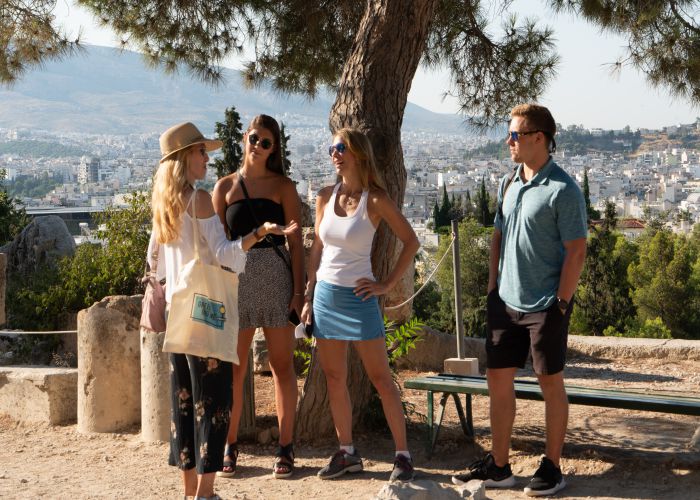
The entrance fees to the Acropolis of Athens are relatively cheap, while they are subject to change from time to time. Depending on the season of your visit, the prices may also vary. Here is the price list of the Acropolis entrance fees for 2022:
- 20€ in the summer season and 10€ in the winter for people from 25 to 65 years from countries both within or outside the European Union (which is at least one reason to visit Greece in February or the winter months in general).
- 10€ all year round for people from 6 to 25 years old from countries outside the European Union.
*Please note that people who are eligible for free access or a reduced ticket (10€) will need to show their ID to confirm their age and country of origin.
Who is entitled to free access to the Acropolis?
- People up to 25 years old from countries within the European Union.
- Children up to 5 years old from countries both within or outside the European Union.
- People above the age of 65 from countries within the European Union.
Free admission days
There are several days within the year when admission is free for everyone:
- 6 March (in memory of Melina Mercouri)
- 18 April (International Monuments Day)
- 18 May (International Museums Day)
- The last weekend of September annually (European Heritage Days)
- 28 October
- Every first Sunday from November 1st to March 31st
How much time do you need to see the Acropolis?
The Acropolis of Athens is a rather large archaeological site packed with fascinating monuments and mythical stories under every nook and crevice. Therefore, to be able to appreciate it fully and thoroughly wander around its premises, you will need at least 2 hours; any less than that and you won’t have the time to get a proper taste of it.
Can you buy tickets to the Acropolis online?
Fortunately, the site hasn’t stayed back in its ancient times but has kept up with the modern, digital world. You can buy tickets to the Acropolis online here, and the way to do so is by clicking on ‘Visitors’ and completing the 4-step form; there you have it, your online ticket is ready to go!
One thing you should take into consideration, however, is that while the simple 20€ adult ticket can be printed from your computer, if you wish to buy a reduced ticket, you can only print a voucher with which you will need to go to the Acropolis ticket office to issue your ticket upon showing your ID/passport.
*Please remember that having a prepurchased ticket in hand will help you skip the lines at the ticket office, but the Acropolis rock itself may still be quite crowded.
Explore the sacred rock through fascinating Acropolis and Acropolis museum tours
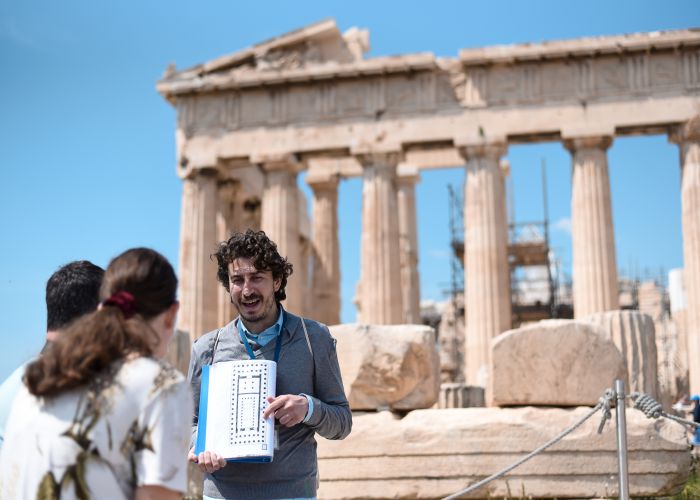
If you want to get an authentic Acropolis experience and appreciate it in all of its glory, your best bet is to join a guided ‘Acropolis Tour’ and let the experts show you around, sharing their valuable knowledge and making you gain a better grasp of the ancient civilization.
If you’re visiting the Acropolis with kids, joining an ‘Acropolis for Families Tour’ will make your life incredibly easy, as our family-friendly, fun guide will make sure to keep your children engaged throughout the whole experience, interacting with them through discussions, story-telling, and entertaining games.
In case your kids are fascinated with the enchanting world of Percy Jackson, you can opt for an ‘Acropolis and Acropolis Museum tour inspired by Percy Jackson,’ where with the help of a specially-trained guide, you’ll retrace the steps of the mythical character and watch his adventures come to life!
Additionally, mythology buffs will be glad to know that by booking a ‘Mythology tour of the Acropolis and the Acropolis Museum,’ they will get local insight into the imaginative tales of Greek mythology associated with every monument they’ll come to a cross on the hill of the Acropolis.
Of course, like true Greeks and Athenians, we couldn’t help but present you with the opportunity to simultaneously discover both the magical Acropolis and the riches of Greek cuisine! Therefore, if you’re a foodie like the Greeks, we highly suggest you take part in the ‘Acropolis Delights: Acropolis & Athens Food Tour,’ a 4-hour walking tour that is the perfect blend of history, mythology, cultural heritage, and gastronomy.
Acropolis opening hours
The Acropolis of Athens opens its doors to the public from sunrise to sunset, which means that the opening hours depend on the season of your visit. In the summertime, the opening hours are from 08:00 to 19:00, while in the winter, they are from 08:00 to 17:00, with the last admission taking place at 16:30.
Of course, there are several days when the archaeological site remains closed, and these are the following:
- 1 January: closed
- 25 March: closed
- 1 May: closed
- Easter Sunday: closed
- 25 December: closed for Christmas in Greece
- 26 December: closed
Can I ensure skip-the-line access to the Acropolis?
If you opt for one of our Acropolis tours, we can provide you with repurchased Acropolis tickets to help you avoid the huge line at the ticket house, especially during the summer months. However, on the basis of new legislation, all minors under the age of 18 need to show their ID or passport to confirm their age to enter the archaeological site.
In that case, the reduced-cost tickets must be reserved online, and you’ll need to get them at the ticket office on the day of your visit, which may result in some waiting by your side.
If you are not a minor and don’t travel with one either, having a ticket in hand is a godsend, and you should -without a doubt- take full advantage of it. Just let us know, and we’ll make it happen!
Amenities for the physically challenged
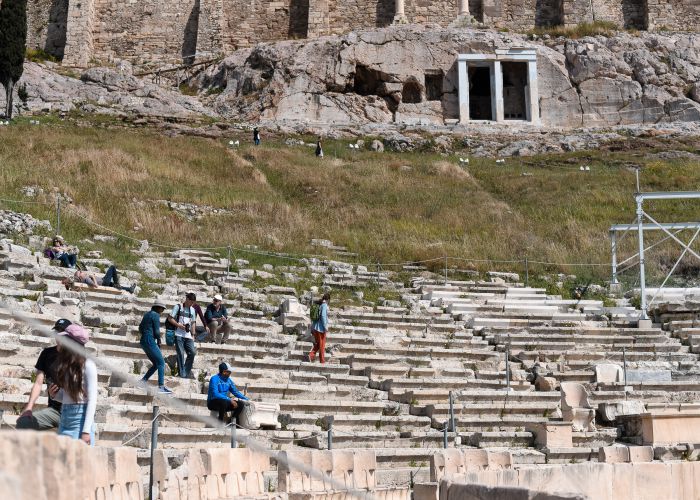
Unfortunately, the site is not physically challenged-friendly due to its steep hill, uphill trails, and numerous steps. It is only partially accessible for disabled people; you can examine the accessible part here.
A specially-made elevator is available on site to accommodate wheelchairs, but it is located at about 350 m. far from the main entrance of the archaeological site, while it is not always open to the public.
For that reason, if you wish to use the elevator, please make sure to contact the Acropolis in advance for additional information (+30 210 3214172, +30 210 9238470), keeping in mind the service is not available during extreme weather conditions and strong winds.
Access to the Acropolis
Being at the heart of Athens, the site of the Acropolis is thankfully incredibly easy to access by car, public transportation, or on foot from the city center. The metro stations that are the closest to the site are the following:
- Metro Station ‘Acropolis,’ from which you can then walk up Dionysiou Areopagitou street to reach it.
- Metro Station ‘Monastiraki,’ from which you can then walk through the archaeological site of Ancient Agora or the picturesque district of Plaka to reach it.
Tips for visiting the Acropolis
- Wear comfortable clothes and shoes, and make sure to dress in layers. Athens is a city you can easily walk around! It can get incredibly hot or a bit chilly, depending on the time of your visit. Additionally, ensure that your shoes are comfortable and slip-resistant, as parts of the site are very slippery due to the thousand-year-old rocks and marble that decorate its ground.
- Bring a hat, sunglasses, a bottle of water -or two- and plenty of sunscreen to protect yourself from the blazing sun of Athens. Even the locals struggle up there.
- Carry with you as little as possible; everything feels like it weighs a hundred pounds when you carry it up a lofty hill under direct sunlight. Please remember that, for security reasons, you can’t enter the site with large luggage, but only with small backpacks and handbags.
- Plan your visit to the Acropolis as early as possible to escape the large crowds and the intense heat, especially during the summer months. You want your exploration of the Acropolis to be a fun, memorable, and comfortable experience, not an exhausting obligation!
- Take your time on the hill. This is a once-in-a-lifetime experience, and you don’t want to rush it. Explore the sacred rock at your pace, taking in everything before you; you don’t want to return to the hotel and have no recollection of any of its monuments. We know it sounds odd, but excitement and speed can make the whole visit seem like a blur afterward.
- Don’t skip visiting the Acropolis Museum. Although much less exciting to look at, it is by no means lackluster or boring. There, you will have the opportunity to marvel at the artifacts, sculptures, and everyday items brought to light from the Acropolis’ excavations, and the fascinating stories behind each and every one of the exhibits are sure to leave you in awe!
Final Thoughts
If we’re talking about cool things to do in Athens, visiting the Acropolis is up there on the list! It is an Athens attraction you can’t miss whether you’re a first-time visitor or a returning fan of Greece.
Now that you have all of the practical information at your disposal and several tips to make your visit to Athens more enjoyable, you have no excuse but to delve into the magical world of the Acropolis the right way and leave with heaps of knowledge and a better understanding of Greek cultural heritage.





